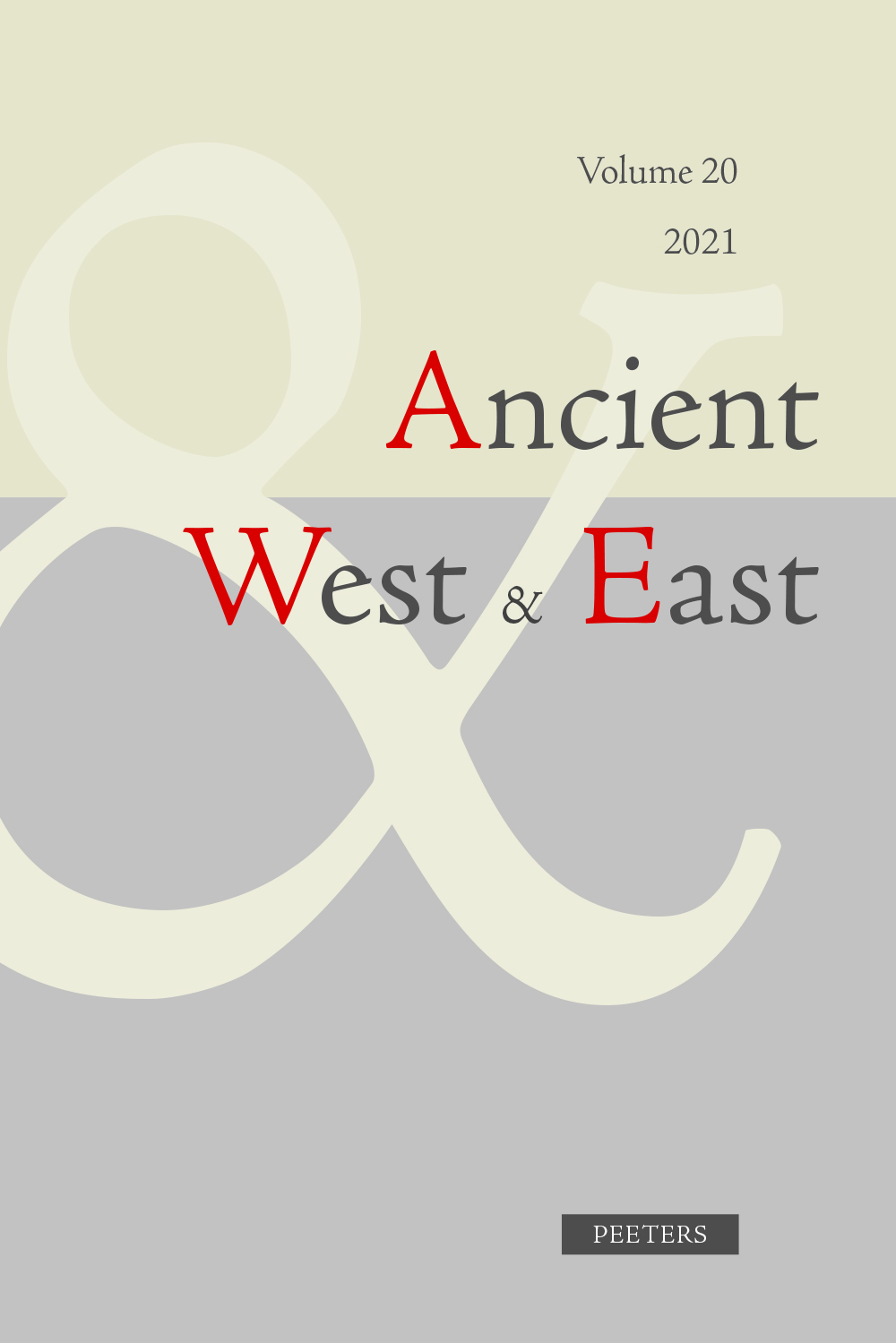 previous article in this issue previous article in this issue | next article in this issue  |

Preview first page |
Document Details : Title: Les antiqutés germaniques de l'époque romaine tardive en Crimée et dans la région de la mer d'Azov Author(s): KAZANSKI, Michel Journal: Ancient West & East Volume: 1 Issue: 2 Date: 2002 Pages: 393-441 DOI: 10.2143/AWE.1.2.3291995 Abstract : The aim of this article is the identification of Germanic antiquities of the late Roman period in the Pontic region. In the territory of the Bosporan Kingdom only a few objects demonstrate the existence of Germanic ethnic groups. Usually they are identified as belonging to the tradition of the Velbark and Chernyakhov cultures. According to finds from aristocratic graves situated in Gospitalnaya Street in Kerch, dating from the second half of the 4th century, Germanic people formed part of the ruling elite of the Bosporan Kingdom. At the beginning of the Great Migration period, objects from the Danube started to appear in the Bosporus, possibly indicating direct contacts between the Crimea and the Danube, even the eastward migration of certain groups of the Danubian population. In Tanais, Germanic artefacts of Central European origin are known from the middle of the 3rd century. In the Hun period, Germanic ethnic groups, culturally close to the Velbark and Chernyakhov cultures, formed a substantial proportion of the population of Tanais. On the basis of archaeological material, it is possible to distinguish two Germanic groups in the southwestern Crimea during the late Roman period: Velbark-Chernyakhov and Scandinavian (with parallels in Norway). |
|


